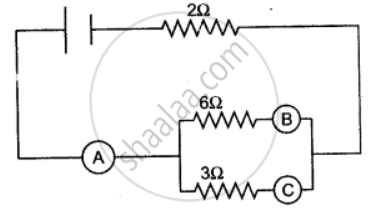Advertisements
Advertisements
Question
What is Ohm's law? Explain how it is used to define the unit of resistance.
Solution
According to Ohm's law, the current (I) flowing through a wire is directly proportional to the potential difference (V) across it, provided its temperature remains the same.
Thus I α V.
V / I = Constant = R
V = IR
Here R is the resistance.
The unit of resistance is ohm (Ω).
One ohm (Ω) is the resistance of a conductor when a potential difference of one volt is applied to its ends and a current of one ampere flows through it.
APPEARS IN
RELATED QUESTIONS
Calculate the work done in moving a charge of 4 coulombs from a point at 220 volts to another point at 230 volts.
The values of potential difference V applies across a resistor and the corresponding values of current I flowing in the resistor are given below:
| Potential differences, V (in volts) | : | 2.5 | 5.0 | 10.0 | 15.0 | 20.0 | 25.0 |
| Current, I (in amperes) | : | 0.1 | 0.2 | 0.4 | 0.6 | 0.8 | 1.0 |
A p.d. of 10 V is needed to make a current of 0.02 A flow through a wire. Wire p.d. is needed to make a current of 250 mA flow through the same wire?
In the circuit shown below:

The potential difference across the 3 Ω resistor is:
State the S.I. unit of electric potential.
Water in the waterfall flows from a higher level to the lower level because of ____________.
What do you understand by the resistance of a wire?
Suppose there are three resistors A, B, and C having resistances r1, r2, and r3 respectively. If R represents their equivalent resistance, establish the following relation R = r1 + r2 + r3 when joined in series.
In the figure given below, A, B and C are three ammeters. The ammeter B reads 0.5A. (All the ammeters have negligible resistance.)

Calculate:
(i) the readings in the ammeters A and C.
(ii) the total resistance of the circuit.
Electric potential is a ____________.
